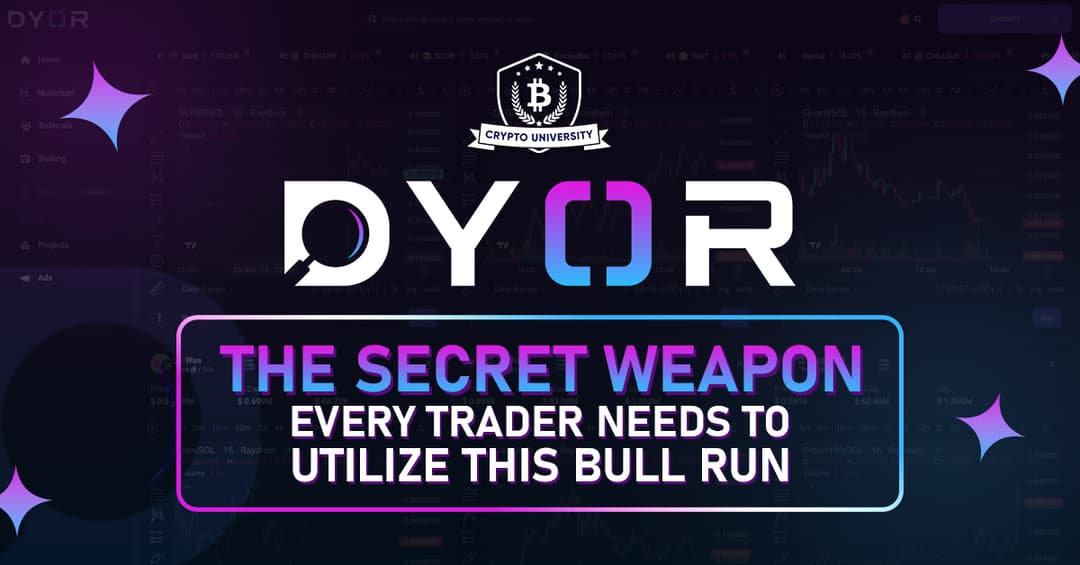No Adverts are available No Adverts are available
No Adverts are available
Step-by-Step Guide On How To Set Up A Crypto Wallet
Sajal Sharma • 4 February 2023
 No Adverts are available
No Adverts are availableIt is now common knowledge that there are a lot of people investing in several digital assets due to the rising popularity of cryptocurrencies today. However, they need to carefully choose a secure wallet to store their funds for a long time without losing them to hackers. And such a wallet must be easy to set up and use. In this blog post, we will guide you through on how to set up a crypto wallet for yourself as a complete beginner.
Before we dive into the process of setting up a wallet, let's understand the basics of cryptocurrency wallets and their types.
What you 'll learn
- What is a Cryptocurrency Wallet?
- Types of Cryptocurrency Wallets
- Choosing the Right Wallet
- Step-by-Step Guide to Setting up a Cryptocurrency Wallet
- Keep Your Wallet Safe and Secure
- FAQs
What is a Cryptocurrency Wallet?
A cryptocurrency wallet is a type of digital storage that enables you to receive, send, and store digital currencies. It is a piece of software that controls your public and private keys while interacting with the blockchain network. Your private key enables you to access and control your funds, whilst your public key serves as a digital address for accepting payments.
Cryptocurrency wallets are crucial for protecting your digital assets and guaranteeing that you are the only person with access to your money. They offer a safe and convenient way to store and manage your cryptocurrencies.
Think of crypto wallets as online bank accounts for your cryptocurrencies but with more major differences: they are not controlled by the government and only you will be in control of your funds at all times.
Types of Cryptocurrency Wallets
There are many types of crypto wallets, each with its own benefits and flaws. The most common types of wallets include:
Software / mobile wallets: This is a mobile wallet or desktop wallet that can be downloaded and installed on your computer or mobile device. MyEtherWallet, Metamask, Exodus, and Trust wallet are a few examples of software wallets. Since they can be accessed from anywhere there is an internet connection, software wallets are the most convenient kind of wallets. Comparatively speaking, they are less secure and more susceptible to hacking than hardware wallets.
These wallets are the key to the decentralized web and the main means of interacting with decentralized financial protocols, such as lending protocols, decentralized exchanges, or non-fungible token (NFT) marketplaces.
Hardware wallets: These are physical, extremely secure devices that store your private keys. Trezor and Ledger Nano X are two examples of common hardware wallets. Because they store assets offline and are therefore less susceptible to hacking, hardware wallets are more secure than software wallets. However, in comparison to software wallets, they are more expensive and less convenient to use.
Paper wallets: You can keep your private and public keys in a safe place by printing them out. For a while, paper wallets were thought to be one of the safest methods for keeping cryptocurrency. However, because they are vulnerable to environmental issues, can degrade over time, and can be lost, or destroyed, they have lost popularity with many crypto users. They are less user-friendly than software and hardware wallets.
Web Wallets: These are online wallets that you can access through a browser. Binance and Coinbase are two examples of common web wallets. The easiest form of wallet to use is a web wallet because you can use it on any web browser connected to the Internet without installing it. They are, however, also the least secure kind of wallets because of their exposure to hacking and security flaws.
When you hold money on a crypto exchange, like Binance, Kraken, or Coinbase, those companies are in control of your cryptocurrencies. Their wallets are known as custodial wallets. But when you move your crypto to a non-custodial wallet like software wallets (Metamask) and hardware wallets (Trezor), you hold the keys to your wallet.
Choosing the Right Wallet
When choosing a wallet, it's important to consider the following factors:
Security: Choose a wallet with a solid history of security and make sure it includes features like hardware encryption, backup options, and two-factor authentication. If your greatest priority is security, think about using a hardware wallet.
Compatibility: It's important to confirm that the wallet you select is compatible with the cryptocurrencies you intend to hold because some wallets only accept a limited number of cryptocurrencies.
User Experience: User Experience: Pick a wallet that is simple to use, has an intuitive user interface and provides clear instructions. If comfort and simplicity of use are important to you, consider using a software wallet.
Costs: The majority of crypto wallets are usually completely free, although others, like hardware wallets, might demand a small monetary investment. We advise you to consider a hardware wallet if you want to keep your coins for longer periods or if you have a lot of them.
Convenience (multi-currency): Choosing a wallet with multi-currency features is essential if you intend to hold many cryptocurrencies. Ensure to select a well-known wallet with lots of ratings and excellent customer service. But if you’re planning to use a crypto wallet for just one crypto, you should check out the coin’s website to see if they have a dedicated wallet.
Step-by-Step Guide to Setting up a Cryptocurrency Wallet
In this section, you will learn how to set up a crypto wallet on Metamask and Trezor.
How to Create a MetaMask Account
- Go to the MetaMask website and click on the "Download " button and install the MetaMask browser extension. MetaMask is available as a browser extension for Google Chrome, Firefox, Brave, and Opera.
- Go to your browser extensions and click on the MetaMask icon. Then click on “Get started" and select "Create a Wallet".
- Follow the instructions shown on your screen to create a new wallet. This includes setting up a password, which will be used to secure your MetaMask account and log in to your account.
- Save your seed phrase. In case you lose access to your MetaMask account, MetaMask has created a seed phrase for you, which is a string of words that can be used to recover your crypto wallet. Your seed phrase should be written down and stored securely.
- Confirm your seed phrase by clicking on the displayed words in the correct order.
Your MetaMask account is now set up successfully and ready to use.
How to set up Trezor wallet
- Buy a Trezor hardware wallet directly from the official Trezor website or from authorized resellers.
- Go back to the Trezor website and click “App”. Then, click either “Get desktop app” or “Trezor Suite for Web”.
- After downloading the application or getting into the web interface, link your Trezor device to your computer with the USB cable given.
- After connecting the device to your computer, you need to click “Install firmware”. This restarts your Trezor device.
- After the restart of the device, you will see two options on the site, “Create a new wallet” and “Recover an existing wallet”. Select “Create new wallet".
- Next, click “Standard backup”. Tap the green checkmark from the pop-up on your device. Then, click “Create backup”.
- Now, you will be able to see the 12-word recovery seed on your Trezor device screen. Write it down on the sheets that came with the wallet and store them separately where you only have access to them. Then verify the recovery phrase on your device.
- Set a PIN on your device and re-enter to confirm it. Although this is optional, it's a way to add an extra level of security to your wallet.
- After setting the PIN, you need to select cryptocurrencies that should show in Trezor Suite. You can change the selection at any time.
- You can personalize the device by setting your own name or any other name on the Trezor suite. Then, click “Access Suite”. Select the wallet type as “Standard wallet“. And that's it. You have now set up your Trezor wallet and are ready to use it.
How to Add funds to your Metamask wallet
- Open the MetaMask extension in your browser.
- Select the desired network in MetaMask. And click on receive to copy the wallet address of the asset you want to add to Metamask.
- Log in to an exchange that supports the specific coin and has the option to withdraw that coin. Go to the withdraw page and paste your Metamask address.
- Input the desired amount of the crypto you want to send from the exchange to your MetaMask wallet. Verify that all details are correct and complete the transaction.
- Wait for the transaction to be confirmed on the blockchain network. This can take a few minutes depending on network congestion.
Once the transaction is confirmed, the crypto will be added to your MetaMask wallet balance.
How to add funds to your Trezor wallet
- Connect your Trezor device to your computer using the USB cable.
- Log in to your Trezor account.
- Select the cryptocurrency you wish to add funds to, such as Bitcoin (BTC) or Ethereum (ETH).
- Click on the "Receive" button. This will show you the wallet address that you can use to send funds to your Trezor wallet.
- Copy the wallet address provided by Trezor.
- Go to your cryptocurrency exchange account, select the option to withdraw funds, and paste the Trezor wallet address into the recipient field.
- Enter the amount of cryptocurrency you wish to send to your Trezor wallet.
- Complete the transaction by clicking "Send" or a similar button on your exchange account.
- Wait for the confirmation of the transaction on the blockchain network. It may take a few minutes to an hour for the funds to appear in your Trezor wallet.
Congratulations! You have successfully added funds to your Trezor wallet.
Keep Your Wallet Safe and Secure
Since it holds your valuable digital possessions, it is crucial to keep your crypto wallet safe and secure. The following suggestions can help you keep your wallet safe:
- Make sure your MetaMask account password is secure.
- Your recovery pin or seed phrase should be kept in a safe place.
- To secure your computer, use trusted antivirus software.
- Never reveal your seed phrase or secret keys to anyone.
- Update the software on your Trezor and MetaMask devices regularly.
Conclusion
It is simple and easy to set up a cryptocurrency wallet. You can create a secure and reliable wallet to store and manage your digital assets by following the tips provided in this article. Before choosing a wallet to set up, you must carefully decide what function you want your wallet to serve. Wallets come in many varieties and serve a variety of functions.
For instance, using a custodial wallet connected to an exchange makes sense if you want to trade frequently and want a simple way to purchase coins using fiat currency. If you wish to securely store a lot of cryptocurrencies, you can use a hardware wallet and also utilize a non-custodial hot wallet like Metamask to take part in more advanced DeFi transactions.
FAQs
How to pick a crypto wallet?
When you are deciding on what crypto wallet is the best option to store your crypto, here are some factors to consider; security, portability, ease of use, multi-currency support, and the reputation of the wallet provider. If you want a wallet that is easy to use frequently, you may have to go for a less secure option and vice-versa.
Do I need a wallet before buying crypto?
If you want to invest in cryptocurrency, you should invest in a wallet. That noted, if you just want to trade them, crypto exchanges like Coinbase and Binance allow you to buy a coin or fractions of a coin and store it on their servers. These are custodial wallets, which doesn't allow you to hold your private key.
When should you move crypto to a wallet?
You should move your crypto to a non- custodial or hardware wallet when you have a lot of crypto or you want to invest your funds for a long time. While you can technically store crypto directly on the exchange, it is not advisable to do so unless in small amounts or if you plan to trade them frequently.
How much is a crypto wallet?
Crypto Hardware wallets cost from $49 for the Keepkey wallet to $149 for the Ledger Nano X, and $219 for the Trezor Model T. The Ledger wallet is seamlessly integrated with other software wallets, such as Crypto.com. Plus it lets you manage more than 5,500 tokens and coins with the Ledger Live app.
Share Posts
Copy Link
cryptouniversity.networkblog/secure...

Ambrose Okolo • 30 May 2025
VeChain’s StarGate Staking Program: Unlocking Rewards by July 1, 2025
VeChain’s StarGate Staking Program launches July 1, 2025, offering massive VTHO rewards and lower staking barriers. It’s your chance to earn, support decentralization, and join blockchain’s next big leap.

Isaac Bandie • 26 May 2025
VeBetterDAO: The Future of Blockchain-Driven Sustainability
Small actions. Big impact. With VeBetterDAO, every eco-friendly choice earns you rewards. Join the movement that turns good habits into blockchain-powered incentives. vebetter.com
